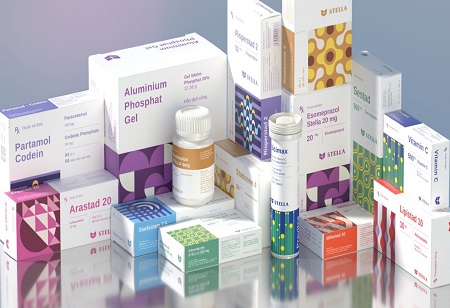Janifha Evangeline | Sunday, 18 June 2023

Any product that needs to be transported must include packaging. It aids in preventing damage during delivery, offers the details required to get to its target location, and even prioritises the security of the handlers and customers. Packaging, however, takes on a whole new significance in the pharmaceutical sector.
Pharmaceuticals require the highest care and cover during travel due to the delicate nature of medication and health items, their ability to save lives, and their high target status for thieves. From point A to point B or even C, they must be completely safeguarded. After clearing up the broad strokes, let's dig deeper into the crucial functions and significance of pharmaceutical and medical packaging.
Medication is intended to benefit patients by curing or halting the progression of their ailment. However, they can be harmful if taken in extremely high or low dosages. This is so because the ingredients and chemicals used to make them can be harmful if not used properly. Due to this, companies that produce pharmaceutical packaging create materials that stop spilling and leaking. Because of this packaging, no medication's active ingredients can accidentally get on your hands or into your mouth.
Drug containment done correctly will save lives. Pharmaceuticals are intended to assist people by treating their illness, preventing it from getting worse, or preventing it. Some drugs, however, have the potential to be more harmful than helpful if used in extremely excessive doses. Because of this, packaging businesses use unique forms of packaging that separate specific dosages. This is the initial line of defence for a pharmaceutical product and is referred to as primary packaging. Blister packs, sachets, and vials are typical types of primary pharmaceutical packaging. Pills are contained in blister packs, whereas liquids and powders are better suited for sachets and vials. Overall, safe handling of pharmaceutical items can prevent fatalities. It must be exact.
A bottle of cough medicine or a blister pack of pills could be harmed by a variety of outside factors. Others have mechanical reasons, while some have biological ones. Keep in mind that trucks are used to transport the medications from the plant to the pharmacies. These pharmaceuticals will be harmed by shocks,
vibrations, improper handling, etc. if they are not wrapped properly. Numerous things can harm the primary packaging while it is in storage or in transit, which could expose the contents and reduce their medical value. This is where secondary and tertiary pharmaceutical packaging comes into play – if you are not aware of the differences, not to worry, we explain all you need to know about primary, secondary, and tertiary packaging here. An additional level of packaging to the initial primary layer is needed to protect the contents as well as give valuable information to packaging handlers. This will help minimise the chance of damage as well missing items. One such company that specialises in offering the pharmaceutical sector the most innovative packaging options available is Swiftpak. The company has the expertise necessary to offer the very best solution for your product and business based on its 40+ years of experience.
It's hardly surprising that the pharmaceutical industry is one of the most lucrative sectors to experience counterfeiting. The majority of brands estimate that they lose between 10 and 50% of their sales due to pure counterfeiting, which occurs everywhere in the world. This not only hurts businesses financially, but it also puts consumers at serious risk because of fake drugs. Anti-counterfeit packaging can make a huge difference in the market when there are products that are of bad quality or are potentially harmful. Pharmaceutical packaging is important when it comes to informing consumers about the components and dosage of a particular drug. For instance, facts like taking two pills each day for a month or a general description of the negative effects brought on by this medication should be provided on the packet in a clear and understandable manner. If the container was handled carelessly, patients might never learn how to take the medications. Under - or overdosage, which in some circumstances can be fatal, can result from this.
You will be pleased to learn that pharmaceutical packaging also has a significant impact on persuading customers to buy the product. An atmosphere of harmony and sincerity is created by the packaging, making the business immediately recognisable. Packaging may include images of young children or senior citizens to help customers quickly grasp who the product is intended for. In both of these scenarios, pharmaceutical packaging serves both practical and aesthetically pleasing purposes. Make sure the packaging you choose for your product promotes rapid memory and is consistent with your brand identity. Most importantly, whether it's plastic, glass, or another type of packaging, your pharmaceutical packaging solution ought to be impossible to copy.